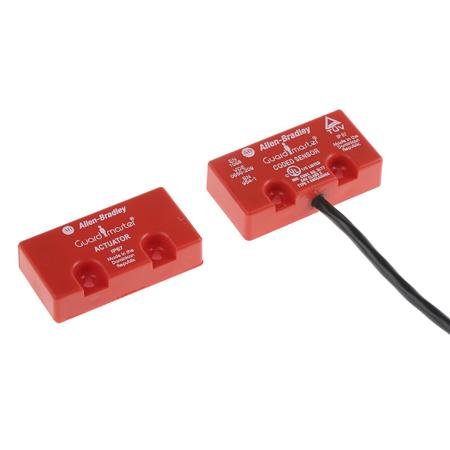In today’s fast-paced industrial world, safety is paramount. Whether in manufacturing plants, assembly lines, or any environment where heavy machinery operates, ensuring the safety of workers and equipment is crucial. One of the most effective devices that contribute to workplace safety is the magnetic safety switch. This blog post delves deep into what magnetic safety switches are, their applications, benefits, and why they should be a key component in your safety strategy.
What Are Magnetic Safety Switches?
These are non-contact devices used to monitor the position of machine guards, gates, and doors. They function by sensing the presence or absence of a magnetic field. When the magnetic field is interrupted (e.g., a guard is opened), the switch activates, signaling that the machine should shut down or enter a safe mode. This ensures that the machine cannot operate when safety guards are compromised, thereby preventing accidents.
Key Features of Magnetic Safety Switches:
- Non-contact operation: No physical contact is required between the switch and the actuator, reducing wear and tear.
- High reliability: Designed to work in harsh environments, including those with dust, moisture, and extreme temperatures.
- Tamper-resistant: Difficult to bypass, ensuring a high level of security.
- Compact design: Easy to integrate into existing machinery without taking up much space.
The Importance of Magnetic Safety Switches in Industrial Settings
In environments where heavy machinery is used, the risk of accidents is high. They are vital in reducing these risks by ensuring that machines operate only when it is safe to do so.
Key Advantages in Industrial Settings:
- Preventing Accidents: By ensuring that machines cannot operate when guards are not in place, these switches prevent accidental startups that could lead to severe injuries.
- Compliance with Safety Standards: Many industries are required by law to implement safety mechanisms like magnetic safety switches. Using them helps companies comply with regulations, avoiding potential fines and legal issues.
- Improved Productivity: While safety is the primary concern, They also help improve productivity by reducing downtime due to accidents or malfunctions.
Applications of Magnetic Safety Switches
Magnetic safety switches are versatile and can be used in a wide range of applications. Below are some of the common scenarios where these switches are essential:
- Machine Guarding: Ensuring that machines with rotating parts, sharp edges, or other hazards do not operate when a guard is open.
- Conveyor Systems: Monitoring access points on conveyor systems to prevent accidents during maintenance or blockages.
- Robotic Work Cells: Securing areas where robots operate, ensuring that humans are not at risk of injury during operation.
- Automated Doors and Gates: Ensuring that doors and gates in industrial settings do not close when an obstruction is present.
How Do Magnetic Safety Switches Work?
Understanding the operation of magnetic safety switches is crucial for those involved in machinery maintenance and safety. The following section explains the working principle of these devices.
Basic Working Principle:
- Actuator Magnet: The switch uses an actuator, typically a magnet, attached to the movable part of a machine guard or door.
- Switch Mechanism: The switch itself is mounted on the fixed part. When the magnet is close to the switch, it generates a magnetic field that keeps the switch closed, allowing the machine to operate.
- Disruption of Magnetic Field: If the guard or door is opened, the magnet moves away from the switch, disrupting the magnetic field. This causes the switch to open, sending a signal to stop the machine immediately.
- Re-engagement: When the guard is closed and the magnet returns to its position, the switch re-engages, allowing the machine to resume operation.
Choosing the Right Magnetic Safety Switch
Selecting the appropriate magnetic safety switch for your application is critical. Here are some factors to consider:
- Environmental Conditions: Consider the environment where the switch will be used. High temperatures, moisture, dust, or chemical exposure can impact the switch’s performance. Choose a switch designed for your specific conditions.
- Type of Machine: Different machines have different safety requirements. Ensure the switch you choose is compatible with the machine’s operational parameters.
- Sensitivity and Range: The distance between the actuator and the switch (sensing range) is crucial. Ensure the switch has the appropriate sensitivity to detect the actuator within the required range.
- Mounting and Installation: Consider how easy it is to install the switch. Some designs are more compact and easier to integrate into existing systems.
The Future of Magnetic Safety Switches: Trends and Innovations
As technology evolves, so do the safety mechanisms in industrial environments. Magnetic safety switches are no exception. Here are some trends and innovations shaping the future of these essential devices:
- Smart Integration: With the rise of Industry 4.0, magnetic safety switches are becoming more integrated with smart systems. This allows for real-time monitoring, data collection, and predictive maintenance, enhancing overall safety and efficiency.
- Enhanced Durability: Innovations in materials and design are leading to magnetic safety switches that are even more robust and durable, capable of withstanding the most extreme industrial environments.
- Wireless Solutions: While still emerging, wireless magnetic safety switches are on the horizon, offering greater flexibility in installation and operation.
Conclusion: Why Magnetic Safety Switches Are a Must-Have
In any industrial setting, ensuring the safety of workers and equipment is non-negotiable. Magnetic safety switches offer a reliable, tamper-proof solution to prevent accidents and ensure machines operate only under safe conditions. By understanding their importance, applications, and how they work, you can make informed decisions to enhance safety in your workplace.
As safety standards continue to rise, the role of magnetic safety switches will only become more critical. By integrating these switches into your safety protocols, you’re not just complying with regulations—you’re actively protecting your most valuable assets: your employees and your machinery.

